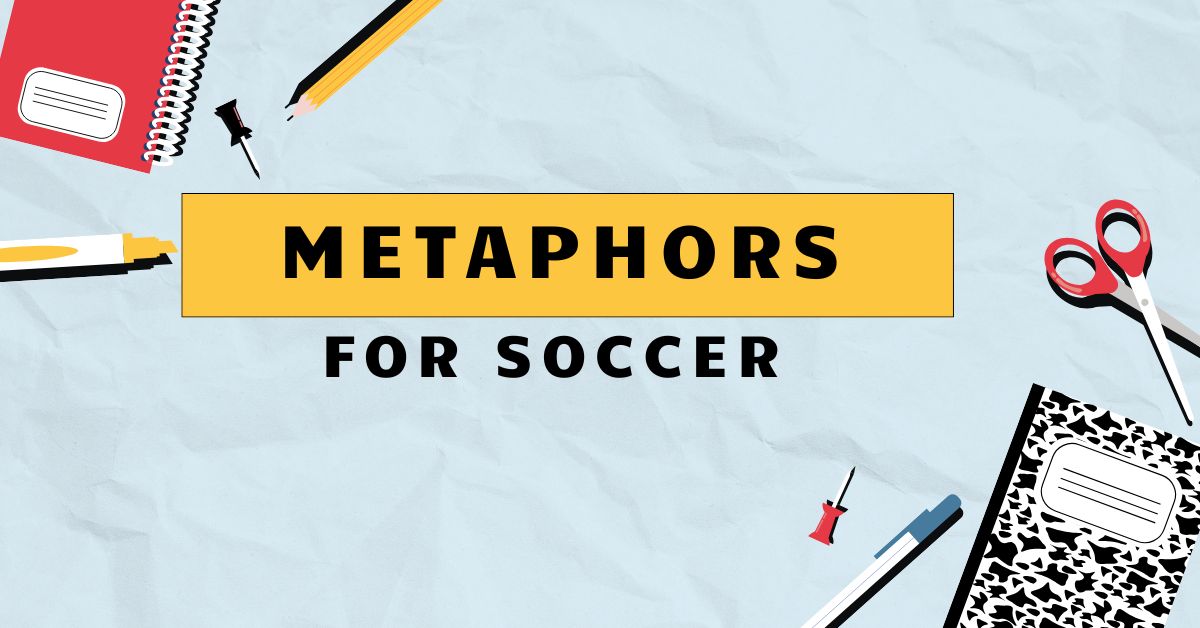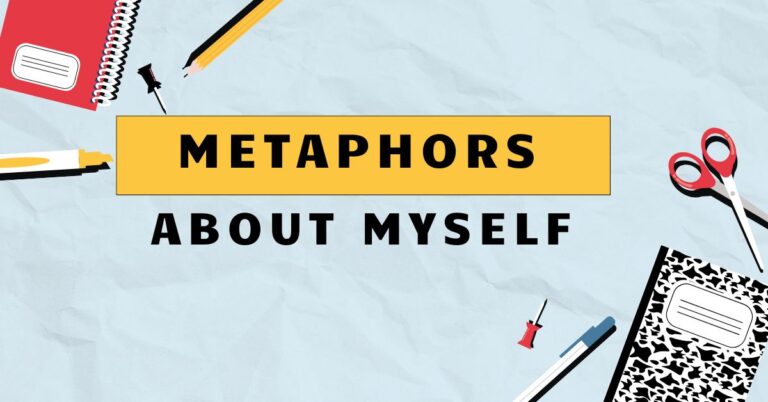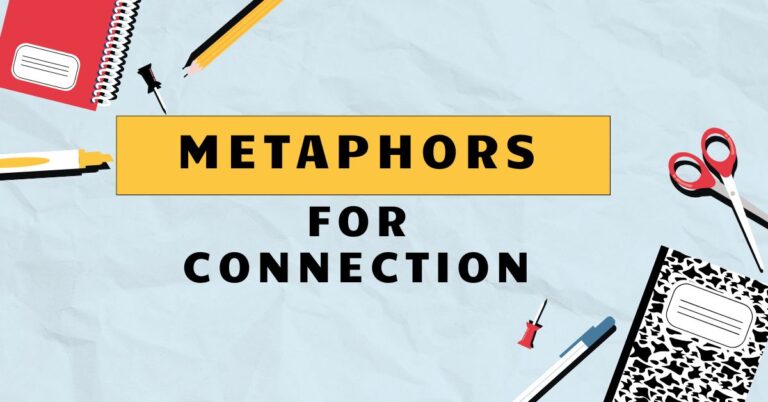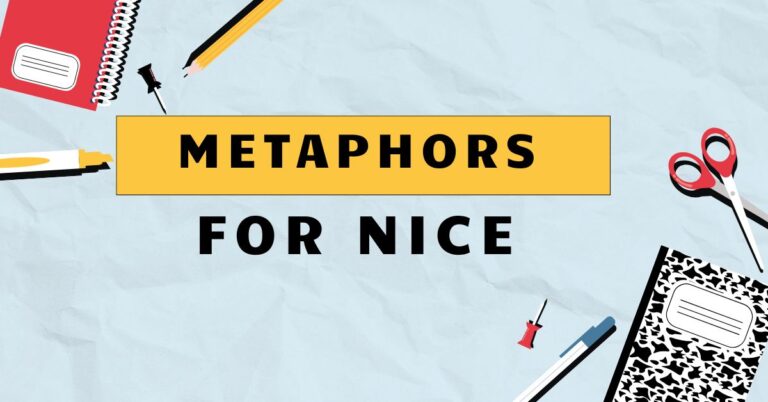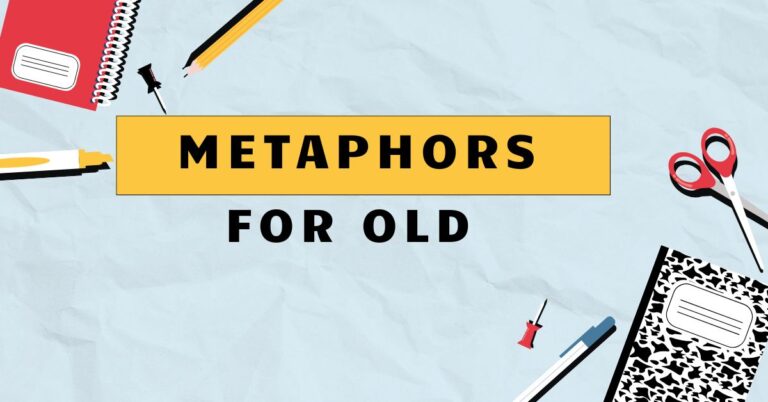45 Soccer Metaphors: A Grammatical Goal-Scorer’s Guide
Metaphors are an integral part of the English language, enriching our communication by adding layers of meaning and vivid imagery. Understanding metaphors, specifically those used in the context of soccer, not only enhances your comprehension of the sport itself but also sharpens your grasp of figurative language in general.
This article serves as a comprehensive guide to soccer metaphors, explaining their grammatical structure, various types, and usage rules. Whether you’re a soccer enthusiast, an English language learner, or simply someone looking to improve their understanding of figurative language, this guide will equip you with the knowledge and skills to confidently identify and interpret soccer metaphors in everyday speech and writing.
Table of Contents
- Introduction
- Definition of Metaphor
- Structural Breakdown of Soccer Metaphors
- Types and Categories of Soccer Metaphors
- Examples of Soccer Metaphors
- Usage Rules for Soccer Metaphors
- Common Mistakes with Soccer Metaphors
- Practice Exercises
- Advanced Topics in Soccer Metaphors
- Frequently Asked Questions
- Conclusion
Definition of Metaphor
Ametaphoris a figure of speech that directly compares two unrelated things without using “like” or “as.” It asserts that one thing *is* another, creating a vivid and often unexpected connection between them. The purpose of a metaphor is to transfer qualities or characteristics from one concept to another, enhancing understanding and adding emotional depth to language.
Metaphors are crucial for effective communication because they allow us to express abstract ideas in concrete, relatable terms.
In the context of soccer, metaphors are used to describe various aspects of the game, including player actions, team strategies, emotional states, and game outcomes. These metaphors draw parallels between soccer-related concepts and everyday experiences, making the sport more accessible and engaging for a wider audience.
For example, describing a player as a “rock” in defense implies their solidity and unwavering presence, even though they are not literally made of rock.
Metaphors enrich our understanding by tapping into pre-existing knowledge and associations. By understanding the underlying comparison in a metaphor, we gain a deeper appreciation for the nuances of the situation being described.
The use of metaphors in soccer commentary and reporting is pervasive, making the ability to recognize and interpret them essential for anyone wanting to fully engage with the sport.
Structural Breakdown of Soccer Metaphors
Understanding the structure of soccer metaphors involves recognizing the two key elements: thetenorand thevehicle. The tenor is the subject being described (e.g., a player, a team, a strategy), while the vehicle is the object or concept used to describe the tenor (e.g., a rock, a machine, a wall).
The effectiveness of a metaphor depends on the shared characteristics between the tenor and the vehicle.
In a soccer metaphor, the vehicle provides a new perspective on the tenor, highlighting specific qualities or attributes. For example, in the metaphor “He’s a midfield maestro,” the tenor is the player, and the vehicle is “maestro.” The shared characteristic is the player’s exceptional skill and control in orchestrating the game, similar to how a maestro directs an orchestra.
The structure can be summarized as:Tenor (subject) IS Vehicle (object with shared qualities).
Furthermore, soccer metaphors often rely onimplied comparison. The connection between the tenor and the vehicle isn’t explicitly stated but rather inferred by the listener or reader.
This requires an understanding of both soccer terminology and common metaphorical expressions. The strength of a soccer metaphor lies in its ability to evoke a clear and compelling image in the mind of the audience, making the description more memorable and impactful.
Types and Categories of Soccer Metaphors
Soccer metaphors can be categorized based on the aspect of the game they describe. These categories help to organize and analyze the different types of figurative language used in soccer commentary and reporting.
Action Metaphors
Action metaphors describe specific movements or plays made during a soccer match. These metaphors often use verbs and imagery related to combat, speed, or precision to convey the intensity and dynamic nature of the game.
They bring the game to life, allowing the audience to visualize the action with greater clarity.
Strategy Metaphors
Strategy metaphors describe the tactical approaches employed by teams and coaches. These metaphors often involve military or game-related terms, highlighting the planning and decision-making involved in soccer.
They reveal the underlying thought processes and strategic intentions behind the on-field actions.
Emotional Metaphors
Emotional metaphors convey the feelings and attitudes of players, coaches, and fans. These metaphors often use imagery related to fire, ice, or storms to express the intensity of emotions experienced during a soccer match.
They add a human element to the game, showcasing the passion and emotional investment of those involved.
Outcome Metaphors
Outcome metaphors describe the results of a soccer match or season. These metaphors often use imagery related to victory, defeat, or progress to convey the significance of the outcome.
They provide a broader perspective on the game, highlighting the long-term consequences of individual matches and overall performance.
Examples of Soccer Metaphors
Here are several examples of soccer metaphors, categorized by the aspect of the game they describe. These examples illustrate the diverse range of figurative language used in soccer commentary and reporting.
Action Metaphor Examples
The following table provides examples of action metaphors used in soccer, along with explanations of their meanings.
| Metaphor | Meaning |
|---|---|
| He unleashed a rocket of a shot. | The player kicked the ball with extreme power and speed. |
| She weaved through the defense like a slalom skier. | The player skillfully maneuvered past multiple defenders. |
| The striker pounced on the opportunity to score. | The striker reacted quickly and decisively to a scoring chance. |
| He bulldozed his way through the midfield. | The player aggressively pushed through the opposing players. |
| The ball sailed into the net. | The ball smoothly and effortlessly entered the goal. |
| He sliced through the defense. | The player moved quickly and easily past the defenders. |
| She danced around the defender. | The player skillfully evaded the defender. |
| The team stormed down the field. | The team moved quickly and aggressively towards the opponent’s goal. |
| He lasered a pass to his teammate. | The player made a very accurate and direct pass. |
| She lobbed the ball over the goalkeeper. | The player kicked the ball in a high arc over the goalkeeper’s head. |
| He hammered the ball into the back of the net. | The player shot the ball with great force, resulting in a goal. |
| The winger exploded down the sideline. | The winger ran very fast along the edge of the field. |
| She threaded the needle with her pass. | The player made a very precise pass through a narrow gap. |
| He picked the pocket of the defender. | The player stole the ball from the defender. |
| The team unleashed a barrage of shots. | The team took many shots in quick succession. |
| He dinked the ball over the defender. | The player gently lifted the ball over the defender. |
| She nutmegged her opponent. | The player passed the ball between the opponent’s legs. |
| The striker latched onto the pass. | The striker quickly and decisively received the pass. |
| He volleyed the ball into the top corner. | The player kicked the ball in mid-air, sending it into the upper part of the goal. |
| She shielded the ball from the defender. | The player protected the ball from the defender using her body. |
| He whipped in a cross. | The player sent a fast, curving ball into the penalty area. |
| She flicked the ball over her head. | The player lightly touched the ball, sending it over her head. |
| The defender cleared the ball with a powerful kick. | The defender kicked the ball away from the goal area. |
Strategy Metaphor Examples
The following table provides examples of strategy metaphors used in soccer, along with explanations of their meanings.
| Metaphor | Meaning |
|---|---|
| They parked the bus in front of their goal. | The team adopted a highly defensive strategy, prioritizing preventing the opponent from scoring. |
| Their defense was an impenetrable wall. | The team’s defense was very difficult to break through. |
| They are playing a high-pressing game. | The team is aggressively trying to win back possession of the ball high up the field. |
| They are dictating the tempo of the match. | The team is controlling the pace and flow of the game. |
| The coach is pulling the strings from the sidelines. | The coach is influencing the game through tactical decisions and substitutions. |
| They flooded the midfield. | The team positioned many players in the midfield to gain control. |
| They are playing a waiting game. | The team is patiently waiting for an opportunity to attack. |
| Their attack is a blunt instrument. | The team’s attack is not very creative or effective. |
| They are suffocating the opposition. | The team is putting intense pressure on the opponent, making it difficult for them to play. |
| The team is building from the back. | The team is starting their attacks by passing the ball out from their own defense. |
| They are exploiting the flanks. | The team is using the wings to attack the opponent. |
| They are playing with a safety-first approach. | The team is prioritizing defense and avoiding risks. |
| Their strategy is a double-edged sword. | The team’s strategy has both advantages and disadvantages. |
| They are cutting off the supply lines. | The team is preventing the opponent from passing the ball to their attackers. |
| They are playing a counter-attacking game. | The team is focusing on defending and then quickly attacking when they win the ball. |
| Their formation is a solid foundation. | The team’s formation provides a strong defensive base. |
| They are probing the defense for weaknesses. | The team is testing the opponent’s defense to find vulnerabilities. |
| They are tightening the screws on the opposition. | The team is increasing the pressure on the opponent. |
| They are playing with a high defensive line. | The team’s defenders are positioned far up the field. |
| They are using a target man up front. | The team is using a strong striker to hold up the ball and bring others into play. |
Emotional Metaphor Examples
The following table provides examples of emotional metaphors used in soccer, along with explanations of their meanings.
| Metaphor | Meaning |
|---|---|
| The fans were a sea of emotions. | The fans were experiencing a wide range of strong feelings. |
| He was burning with desire to win. | The player had a very strong motivation to win. |
| The coach was fuming on the sidelines. | The coach was very angry and frustrated. |
| The players were ice-cold under pressure. | The players remained calm and composed despite the pressure. |
| The stadium erupted in joy after the goal. | The fans expressed their happiness in a loud and enthusiastic way. |
| The team was riding a wave of confidence. | The team felt very confident and optimistic. |
| He was choking under the pressure. | The player was performing poorly due to anxiety. |
| The defeat was a bitter pill to swallow. | The defeat was very disappointing and difficult to accept. |
| The fans were on the edge of their seats. | The fans were very excited and anxious. |
| He was a bundle of nerves before the match. | The player was very anxious and apprehensive before the game. |
| The victory was a shot in the arm for the team. | The victory boosted the team’s morale and confidence. |
| The team was playing with their hearts on their sleeves. | The team was showing a lot of passion and emotion. |
| The atmosphere was electric. | The atmosphere was very exciting and energetic. |
| The players were fired up for the match. | The players were very motivated and enthusiastic. |
| The fans were inconsolable after the defeat. | The fans were very sad and unable to be comforted. |
| The team was buoyed by the support of the fans. | The team was encouraged and motivated by the support of the fans. |
| He was carrying the weight of the world on his shoulders. | The player felt a great deal of pressure and responsibility. |
| The coach was walking a tightrope. | The coach was in a difficult and precarious situation. |
| The players were hungry for success. | The players were very eager to achieve success. |
| The team’s spirit was shattered by the defeat. | The team’s morale was severely damaged by the defeat. |
Outcome Metaphor Examples
The following table provides examples of outcome metaphors used in soccer, along with explanations of their meanings.
| Metaphor | Meaning |
|---|---|
| They snatched victory from the jaws of defeat. | The team won the game despite being in a losing position. |
| The match was a rollercoaster of emotions. | The match had many ups and downs, with both teams experiencing periods of dominance. |
| They cruised to victory. | The team won the game easily and comfortably. |
| The result was a wake-up call for the team. | The result served as a warning that the team needs to improve. |
| The team stumbled at the final hurdle. | The team failed to achieve their goal at the last moment. |
| The victory was a stepping stone to greater success. | The victory was an important step towards achieving bigger goals. |
| They sealed the deal with a late goal. | They secured the victory with a goal scored near the end of the match. |
| The defeat was a major setback for their title hopes. | The defeat significantly reduced their chances of winning the title. |
| They turned the game around with a stunning comeback. | They reversed a losing position to win the game. |
| The result was a fair reflection of the game. | The result accurately represented the events of the match. |
| They were outclassed by their opponents. | The team was significantly better than their opponents. |
| The match was a cagey affair. | The match was tense and cautious, with neither team taking many risks. |
| They dominated the match from start to finish. | The team controlled the game for the entire duration. |
| The result was a smash and grab raid. | The team won the game despite not playing well. |
| They threw away a lead. | The team lost a lead and ended up losing or drawing the game. |
| The match was a war of attrition. | The match was physically demanding and exhausting for both teams. |
| They weathered the storm to secure the victory. | They survived a period of intense pressure from the opponent and won the game. |
| The result was a Pyrrhic victory. | The victory came at a great cost. |
| They left it late to score the winner. | They scored the winning goal in the final moments of the match. |
| It was a game of two halves. | The two halves of the game were very different, with each team dominating one half. |
Usage Rules for Soccer Metaphors
Using soccer metaphors effectively requires an understanding of their nuances and appropriate contexts. Here are some key usage rules to consider:
- Clarity: Ensure the metaphor is easily understandable and relevant to the situation being described. Avoid using obscure or overly complex metaphors that may confuse the audience.
- Context: Use metaphors that are appropriate for the tone and style of the communication. Formal reporting may require more restrained metaphors, while informal commentary can be more expressive.
- Originality: While common metaphors can be effective, strive to use original and creative metaphors to add freshness and impact to your language.
- Consistency: Maintain consistency in your metaphorical language. Avoid mixing metaphors that create conflicting or illogical images.
- Accuracy: Ensure the metaphor accurately reflects the qualities or characteristics being emphasized. Avoid using metaphors that distort or misrepresent the situation.
By following these usage rules, you can effectively incorporate soccer metaphors into your communication, enhancing its clarity, impact, and engagement.
Common Mistakes with Soccer Metaphors
Several common mistakes can hinder the effective use of soccer metaphors. Being aware of these pitfalls can help you avoid errors and improve your metaphorical language skills.
- Mixed Metaphors: Combining incompatible metaphors that create illogical or confusing images.
- Incorrect: “He’s a midfield rock, firing on all cylinders.” (Mixing the image of a solid rock with that of a high-powered engine)
- Correct: “He’s a rock in midfield, providing a solid defensive presence.”
- Overused Clichés: Relying too heavily on tired and unoriginal metaphors that lack impact.
- Incorrect: “They’re playing a game of two halves.” (While accurate, it’s a very common expression)
- Correct: “The match transformed entirely after the interval, becoming a different contest altogether.”
- Inappropriate Tone: Using overly casual or humorous metaphors in formal contexts.
- Incorrect: “The defense was all over the place like a clown car.” (In a serious match report)
- Correct: “The defense lacked cohesion and organization.”
- Misunderstanding the Metaphor: Using a metaphor incorrectly due to a lack of understanding of its original meaning.
- Incorrect: “They parked the bus and went for goal.” (Parking the bus is a defensive tactic)
- Correct: “They parked the bus, hoping to secure a draw.”
Practice Exercises
Test your understanding of soccer metaphors with these practice exercises.
| Question | Answer |
|---|---|
| 1. What does it mean when a commentator says a team “parked the bus”? | A. The team adopted a defensive strategy. |
| 2. Which type of metaphor is “He unleashed a rocket of a shot”? | A. Action metaphor. |
| 3. What does it mean when a player is described as “ice-cold under pressure”? | A. The player remains calm and composed. |
| 4. Identify the metaphor in the sentence: “The fans were a sea of emotions.” | A. Sea of emotions. |
| 5. What does it mean when a team “snatches victory from the jaws of defeat”? | A. The team wins despite being in a losing position. |
| 6. Which type of metaphor is “Their defense was an impenetrable wall”? | A. Strategy metaphor. |
| 7. What does it mean when a coach is described as “fuming on the sidelines”? | A. The coach is very angry and frustrated. |
| 8. Identify the metaphor in the sentence: “The victory was a stepping stone to greater success.” | A. Stepping stone. |
| 9. What does it mean when a player “threads the needle” with a pass? | A. The player makes a very precise pass through a narrow gap. |
| 10. Which type of metaphor is “The stadium erupted in joy after the goal”? | A. Emotional metaphor. |
| 11. What does it mean when a team “floods the midfield”? | A. The team positions many players in the midfield to gain control. |
| 12. What does it mean when a team “suffocates the opposition”? | A. The team puts intense pressure on the opponent, making it difficult for them to play. |
| 13. Which type of metaphor is “The match was a rollercoaster of emotions”? | A. Outcome metaphor. |
| 14. Identify the metaphor in the sentence: “The team stormed down the field.” | A. Stormed down the field. |
| 15. What does it mean when a team “weathered the storm”? | A. They survived a period of intense pressure from the opponent. |
Advanced Topics in Soccer Metaphors
For advanced learners, exploring the cultural and historical context of soccer metaphors can provide deeper insights into their meaning and usage. Examining how metaphors are translated and adapted across different languages and cultures can reveal interesting variations and nuances.
Additionally, analyzing the use of metaphors in different types of soccer discourse (e.g., commentary, journalism, fan forums) can highlight the diverse ways in which figurative language is employed to shape perceptions and interpretations of the game. Advanced learners might also consider creating their own original soccer metaphors, pushing the boundaries of figurative language and adding new dimensions to the way we talk about the sport.
The study of metaphor is a vast and rewarding field, offering endless opportunities for linguistic exploration and creative expression. Consider how different cultural backgrounds may influence the interpretation and use of specific metaphors.
For instance, a metaphor rooted in military strategy might resonate differently in cultures with varying historical experiences of conflict.
Furthermore, exploring the cognitive science behind metaphor can provide a deeper understanding of how metaphors shape our thinking and understanding. Cognitive linguistics views metaphor not just as a figure of speech, but as a fundamental cognitive process that structures our conceptual system.
By understanding the cognitive mechanisms underlying metaphor, we can gain a more profound appreciation for its power and influence. This involves looking at conceptual mappings and how they influence our understanding of abstract concepts through concrete experiences.
For example, the metaphor of “attacking” in soccer maps the physical act of moving forward onto the abstract concept of trying to score a goal.
Frequently Asked Questions
- What is the difference between a metaphor and a simile?
A metaphor directly compares two things by stating that one *is* the other, while a simile uses “like” or “as” to make a comparison. For example, “He is a rock in defense” is a metaphor, while “He is as solid as a rock in defense” is a simile.
- Why are metaphors used so frequently in soccer commentary?
Metaphors add vividness and emotional depth to the commentary, making the game more engaging and accessible for viewers. They also allow commentators to express complex ideas in a concise and memorable way.
- How can I improve my understanding of soccer metaphors?
Pay attention to the language used by commentators and sports journalists, and actively analyze the metaphors they use. Consider the underlying comparison being made and the qualities being emphasized. Also, read widely on the topic of figurative language and metaphor.
- Are soccer metaphors universal, or do they vary across cultures?
While some soccer metaphors are widely understood, others may be specific to certain cultures or regions. Factors like cultural values, historical experiences, and local idioms can influence the use and interpretation of metaphors.
- Can metaphors be used in all types of soccer writing and communication?
Metaphors can be used in various types of soccer communication, but it’s important to consider the context and audience. Formal reporting may require more restrained metaphors, while informal commentary can be more expressive.
- What should I do if I don’t understand a soccer metaphor?
If you encounter a metaphor you don’t understand, try to break it down into its component parts (tenor and vehicle) and consider the possible connections between them. You can also consult online resources or ask someone familiar with soccer terminology for clarification.
- How can I avoid using mixed metaphors in my own writing and speaking?
Carefully consider the images and concepts being evoked by your metaphors, and ensure they are consistent and compatible. Avoid combining metaphors that create illogical or conflicting images.
- Can I create my own soccer metaphors?
Yes, creating your own original metaphors can be a great way to enhance your language skills and add creativity to your communication. Be sure to consider the clarity, relevance, and impact of your metaphors.
- How do metaphors contribute to the emotional impact of a soccer match?
Metaphors tap into our emotions by associating the events of the game with powerful images and concepts. They can amplify feelings of excitement, disappointment, triumph, or despair, making the viewing experience more immersive and meaningful.
- What role do metaphors play in shaping public perception of soccer players and teams?
Metaphors can influence how we perceive players and teams by highlighting certain qualities or characteristics. Describing a player as a “warrior” or a team as a “well-oiled machine” can shape our opinions and expectations of them.
Conclusion
Mastering the art of soccer metaphors is a valuable skill for anyone looking to enhance their understanding and appreciation of the sport. By recognizing the structure, types, and usage rules of these metaphors, you can unlock a deeper level of engagement with soccer commentary, reporting, and analysis.
Remember to avoid common mistakes like mixed metaphors and overused clichés, and strive to use original and creative language to express your ideas effectively. With practice and attention to detail, you can confidently navigate the world of soccer metaphors and become a true linguistic goal-scorer.
In conclusion, understanding soccer metaphors not only enriches your vocabulary and comprehension of figurative language but also provides a deeper connection to the sport itself. By actively engaging with these metaphors, you can unlock a new dimension of appreciation for the beautiful game.
Continue to observe, analyze, and practice using these metaphors, and you will find yourself becoming a more articulate and insightful communicator about all things soccer. The journey to mastering soccer metaphors is an ongoing one, but the rewards are well worth the effort.

